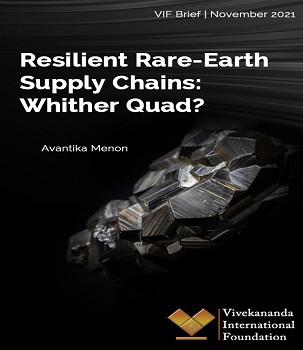
The ubiquitous iPhone is perhaps the most commonly cited example used to showcase the globalized nature of supply chains. Starting from its design process in California, US, the complex supply chain for its production and assembly spans 43 countries across 6 continents. For instance, the chip inside the phone is designed in the US, fabricated in Taiwan, tested in Philippines and assembled into the final product in China by a Taiwanese company, Foxconn. Technological advancements driven by organisations constantly vying for production efficiency and lowered costs have led to the creation of increasingly complex and interdependent supply chains. At present, even the most mundane products have an ‘overseas’ presence with either offshore resource procurement, manufacturing or servicing facilities. While these global supply chains have been functioning relatively smoothly for more than a decade now, concerns regarding their resilience and the dependence on China as an important node have come to fore following the onslaught of the Covid-19 pandemic.






Post new comment